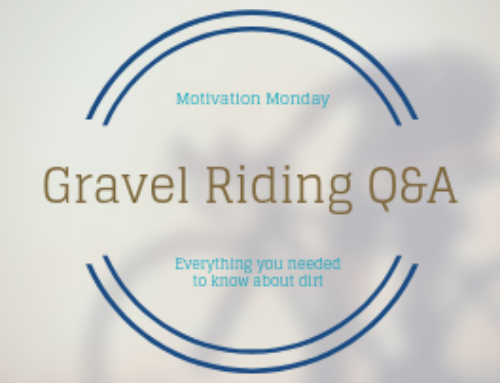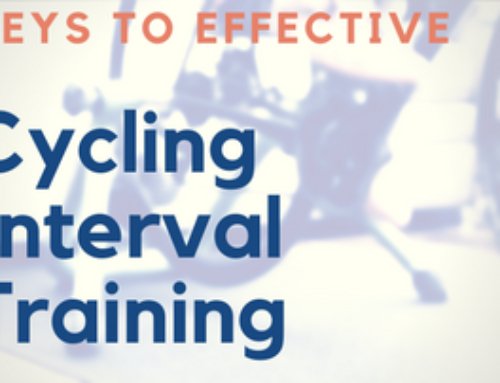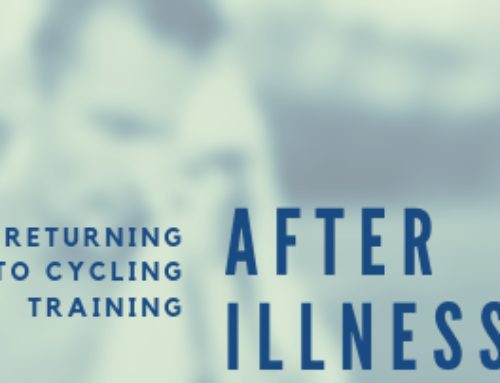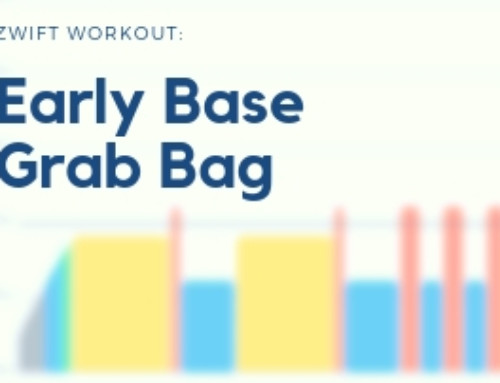For a long time it's been said that the ticket to aerobic fitness is lots of riding at moderate paces. High intensity interval training was only for racers or competitive cyclists preparing for a hard event. The problem with that concept is that most cyclists have jobs, families and other commitments that prevent them from spending 25 hours per week training. They want to be fast, but they don't have the time to train to be fast. There has to be some way to boost fitness in less time.
High intensity interval training is the answer to that question.
What exactly is high intensity interval training? Why does it work so well? How does it help to build fitness so quickly? In this episode of the Tailwind Coaching podcast I'll cover the science behind high intensity interval training and explain how it can help you boost your fitness in a fraction of the time you might usually spend.
Click through for the podcast show notes and more:
This podcast is brought to you by Stages Cycling, creators of the Stages Power Meter. Check them out and help support the show!
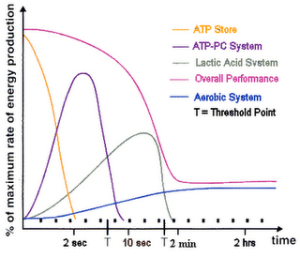 What is High Intensity Interval Training?
What is High Intensity Interval Training?
@ 4:25 – High intensity interval training is also referred to as HIIT or HIT training. It consists of short bouts of high-intensity exercise (zone 4+ and above), generally up to about 8 minutes in length. Work intervals are usually repeated several times for a combined amount of time around 20-40 minutes of work.
High intensity interval training was conceptually started around the mid-90s, when the Tabata study showed similar improvement in VO2 max with 20s/10s on/off intervals compared to longer duration VO2 max intervals.
The zones involved in high intensity interval training are:
- Z4+ – upper end of FTP/threshold zone
- Z5 – Vo2 max (3-8 minutes)
- Z6 – Anaerobic threshold (30s-2 or 3 minutes)
- Z7 – Neuromuscular power (0-30s)
High Intensity Interval Training: Aerobic vs. Anaerobic
@ 9:28 – There is no real textbook definition of the aerobic/anaerobic split when it comes to high intensity interval training, but I make a distinct differentiation in my training systems.
- Aerobic high intensity interval training is typically Z5 type intervals (30/30s, 9x3s, 3x8s etc) which stimulate aerobic adaptations primarily – W' podcast
- These intervals tend to NOT allow full recovery between each interval, therefore maintaining a fairly high overall heart rate and preventing recharging of anaerobic energy systems (this forces aerobic adaptations)
- Anaerobic high intensity interval training involves full recovery between each work interval
- Work intervals are short, Z6/Z7 efforts
- Anaerobic energy is buffered or recharged between interval work bouts
Defining VO2 max:
- V02max = HRmax x SVmax x (AOx-VOx)
- HR max is maximum heart rate
- SV max is Stroke Volume Max, combination of HR and stroke volume
- AOx – VOx is the difference in oxygen between arterial blood and venous blood, or a measure of your metabolic efficiency at extracting and using oxygen.
High Intensity Interval Training Benefits:
Increased anaerobic and aerobic fitness through:
- Increased plasma volume (direct impact on SVmax)
- Increased mitochondrial density (direct impact on AOx-VOx)
- Increased muscle fiber strength
- Slow twitch fiber hypertrophy (increased amount of muscle fiber to utilize oxygen)
- Increased muscle capilliarization (impact on AOx-VOx)
- Increased venous return (more muscle contraction, stronger contraction pushes blood back to the heart)
- Fast twitch hypertrophy
- High energy pathway improvements (pCr and anaerobic glycolysis and ATP)
- Increased lactate tolerance (increased buffering component)
- Increased neuromuscular power/fiber recruitment
- Many adaptations stimulated through AMPK activation
High Intensity Interval Training and AMPK:
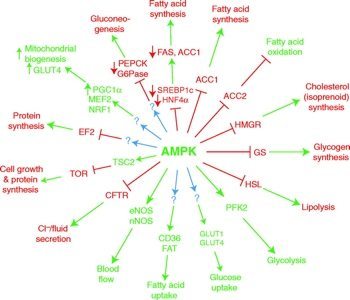 HIT forces the use of anaerobic energy substrates, causes adaptation through the AMPK pathway.
HIT forces the use of anaerobic energy substrates, causes adaptation through the AMPK pathway.
- AMPK = Adenosine Mono Phosphate Kinase
- As ATP is reduced to ADP and AMP, the ratio stimulates AMPK
- Leads to a variety of adaptations such as those previously mentioned
- Mostly leads to increases in mitochondrial density and efficiency, fat metabolism efficiency, increased glycogen synthesis and storage
- Further stimulated by fasted training
@24:01 – HIT raises the “ceiling” of your fitness:
- VO2 max is the maximal amount of oxygen the body can take in and utilize for exercise
- Anaerobic capacity is all work above FTP but below VO2 max
- So say threshold is 85% of your VO2 max (reasonable expectation for a trained cyclist)
- For sake of argument, say 300W is VO2 max (from an 8 minute all out test)
- 85% of 300 watts is 255W (or your threshold for an hour long TT)
- If you raise your VO2 max to 325W, your threshold power increases to 275W (or at least has the potential to do so)
- Note that this is theoretical: everyone has a different threshold in relation to VO2 max, so this is not a reliable testing protocol for FTP
HIT can lead to preferential hormonal status:
- High intensity interval training causes less of a cortisol spike due to the short term nature of exercise.
- High intensity interval training is less catabolic and causes less impact on anabolic processes such as HgH and testosterone production (less cortisol production, less of your body thinking it has to get rid of everything that doesn't help it go faster in a straight line for a long period of time)
- Less systemic inflammation created (shorter duration so confined to exercising tissues and doesn't often spill over into systemic systems)
High Intensity Interval Training Drawbacks:
@ 34:03 – Many people think that HIT has so many benefits that they should just HIT it all the time. Not so, because:
- HIT work is highly metabolically taxing so it requires increased rest
- Increased rest comes in the form of both inter-interval rest and inter-workout rest
- The goal of the workout determines the inter-interval rest periods
- Aerobic adaptation can afford shorter rest intervals to maintain a higher heart rate and adapt VO2 max
- Anaerobic adaptations will require full rest and W' recharge to be able to properly perform the required intensity and duration
- Inter-workout rest depends upon the overall training load of each workout
- This could mean a day or two off in between each workout
- Manage your fatigue via reading your PMC or even HRV
- HIT work requires VERY high intensity which some may not be prepared for
- HIT is prone to the “more is better” pitfall (more is NOT better, more will cause burnout in time) – See the Intensity Trap podcast #1 and podcast #2.
Now you have an idea of why high intensity interval training is so beneficial. In the next episode of the Tailwind Coaching podcast, I'll talk about programming high intensity interval training into your workout schedule.
Don't forget that the off-season is upon us and that means it's time to think about your goals for next season. What will you be training for? You can pick from a ton of great training options in my downloadable training plan store, including my new Unbreakable Core Stability module and my 2016 Battenkill training plan. You can also get a ton of great training tips FOR FREE, so sign up for the Tailwind Coaching Newsletter to get my best coaching tips delivered to your inbox, along with a free bonus training plan, updates, and exclusive discounts like the Unbreakable Core Stability discount!
If you enjoyed this episode, please do me a favor and head over to the Tailwind Coaching Podcast on iTunes and rate it 5 stars. A positive review helps the podcast move up the ratings, reach more listeners, and help more people get stronger, faster and fitter. Don't forget to post any questions to the Tailwind Coaching Facebook page, on the Tailwind Coaching forums, contact me via email or leave a comment below. Don't forget to support our sponsors and help to keep this podcast free, help me to get this information to more people and help grow the cycling community.
Podcast: Play in new window | Download (Duration: 44:13 — 60.7MB)
[wdsm_ad id=”5402″ class=” aligncenter” ]
